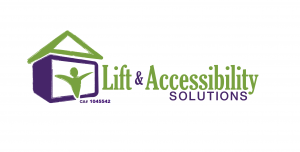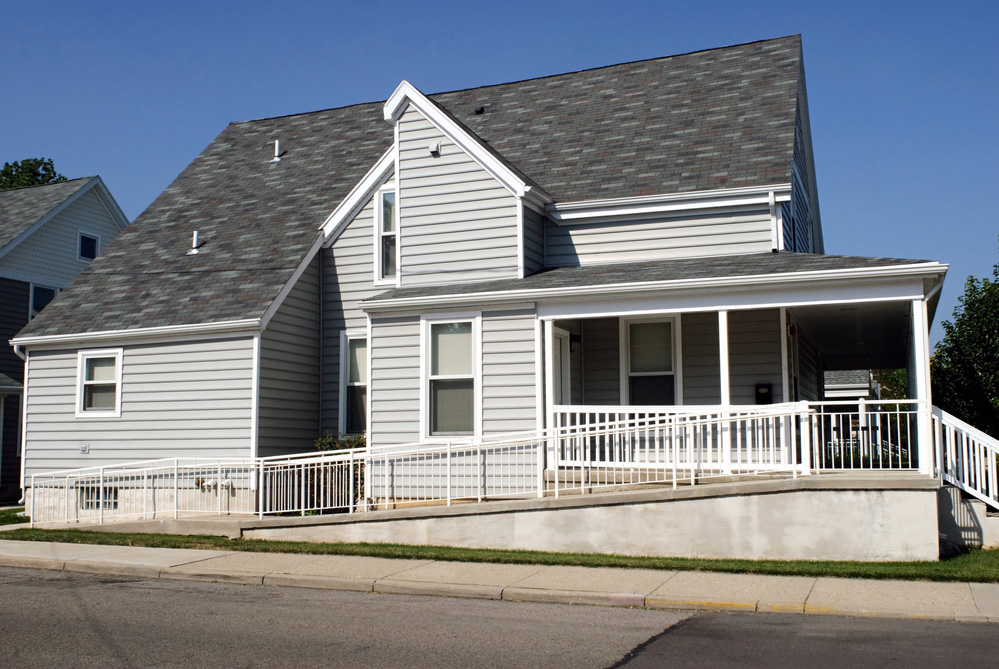As family members age, you may be faced with the task of installing a wheelchair or accessibility ramp in their home – or, perhaps, in your own. In order to ensure that the ramp is completely safe for your loved one’s use, there are several things you should consider. With some careful planning, you should be able to avoid common roadblocks that can occur when building an accessibility ramp or deck.
Space Limitations
Limited space is one of the biggest complications you may encounter. Whether it’s due to trees, other structures or simply the fact that there is not much room available, limited space can make ramp construction a bit more difficult. The best way to work around this problem is by constructing a U-shaped or L-shaped ramp, so as to accommodate more ramp length in a smaller space.
Building Codes
The building codes in place for accessibility are stricter for commercial buildings than for residential, but there still may be requirements from your HOA or local laws. Be sure to look into them before you start construction, so that you aren’t caught with a ramp that doesn’t adhere to safety standards and codes.
Ramp Slope & Platforms
The standard for ramp slope is 1:12, meaning that for every one foot of elevation you will need 12 feet of ramp length. You may prefer a slope of 1:14 or even 1:16 for a gentler rise, depending on the health and strength of your loved one. Also bear in mind that you cannot have a ramp run of more than 30 feet without a flat platform for rest, which needs to also be 60” x 60” if the ramp changes directions after that platform.
Handrails & Materials
With ramps that have a rise over six inches or that are longer than 72 inches, it’s recommended that you install handrails. Remember that you must have at least three feet (36 inches) of clear ramp between the handrails to accommodate a wheelchair! Also, it’s advised that you select nonskid and weatherproof materials for any ramps that will be exposed to outdoor elements.
By knowing these potential pitfalls ahead of time, hopefully you will be able to successfully construct and install a safe and sturdy accessibility ramp or deck. If you have more questions, or if you’d like to learn about the ramp options we offer, contact us today!
Your house is the place to be for family gatherings. There’s lots of space for the kids to run around, a beautiful deck for people to congregate, but some folks aren’t as young as they used to be. Even though your deck may be accessible to a majority of your guests, those steep steps may be like climbing a mountain to some of your older relatives. Without proper hand railings or assistance, these steps could cause serious falls. Since nobody is getting any younger, it is a good idea to install accessible decks and ramps at your home.
Safety First
If you have elderly members in your family, negotiating difficult pathways and hard-to-climb stairs can prove hazardous. Nobody wants to put a barbeque on hold due to a nasty spill. Therefore, creating accessible decks and landings should be installed. In order to evaluate your exact needs, you need to look at safety. How safe is your living space in its current state? What do you need to make everything safer and more accessible for the older folks in your family that may have difficulty walking, or are maybe even in a wheelchair? You should also consider developments that you may not need now, but are strong possibilities in the future. Once you have concluded everything you need to increase the safety of your home, you can begin planning your safety features.
Planning Safety Features
When designing your home, you don’t often think about what may be hazardous for those with limited mobility if it’s not something you have to deal with daily. Therefore, when you start planning new safety features for your home, consider these factors that impede those who have difficulties with movement:
Traction: Slippery or cluttered walkways, steps, and even ramps are daunting to those who already have limited mobility. Most of the time, elderly folks don’t pick their feet up when they walk, so if steps are too steep or if there is a lot of clutter in their paths, they can slip or fall. Installing non-slip treads improves traction and helps ensure proper footing. Not only that, but better traction will eliminate falls, trips, and slips.
Grip: Not having proper railings or handles can also keep aging family members from climbing stairs, even if it’s only a few steps. Installing grab bars and proper railings assist those with balance issues and limited mobility. If you can, try to install these helpful safety features on both sides in order to ensure that there will not be any falls. Since aging adults often have trouble bending their knees, having access to grab bars or proper railings increases stability and can help them climb taller stairs or even the few steps to your front door without extra assistance.
Remember these helpful tips when designing a more accessible home for your elderly friends and family members, and you won’t be sorry.
Part of the aging process means accounting for physical changes that can reduce one’s mobility. Whether individuals decide to age in an assisted living facility or in their homes is dependent on costs, needs and resources. The decision to remain in one’s home often means changes must be made to accommodate safety and accessibility. Contractors and companies that specialize in making homes accessible and safe for aging seniors can help. Living in one’s home throughout the aging process does not have to become an impractical choice or beyond one’s financial reach. Although needs may change, simple and affordable home modifications can make it easier to live safely. The following represents the top things seniors and their loved ones should consider before making structural changes to their homes:
1. Needs: What are your specific concerns and needs related to safety and accessibility? Seniors that use a wheelchair or walking equipment will likely need to replace stairs with ramps or stair lifts for greater accessibility. Consider whether it makes practical sense to make changes to any outdoor or indoor stairwells. What areas of the house will you continue to use? Some seniors decide that replacing an indoor staircase with a ramp is unnecessary if they do not need to gain access to specific portions of the house. For instance, a live-in caregiver may reside within the areas that are accessible via the staircase and the separation will serve both parties well.
2. Costs: What will it cost you to make the necessary changes to your home? Will you need financial assistance? It is best to make a list of the changes you will need to make and get an estimate from a licensed contractor. If the changes involve the purchase and installation of stair lifts, decks, ramps, support bars, and elevators, research the anticipated costs with several companies. These types of changes can range from hundreds to thousands of dollars. Several agencies and volunteer organizations, such as the Area Agencies on Aging (AAA), may be able to provide financial assistance. Mortgage lenders may also offer products that can supply funds to pay for upgrades.
3. Modifications: Does carpet need to be removed and replaced with a slip-resistant alternative? Is any laminate or wood flooring potentially unsafe? Sometimes simple changes such as a rug will do the trick. Do the bathrooms need to have support bars or special tubs and showers installed? Do doorknobs and handles need to be replaced with arthritis-friendly levers? These are questions about modifications you will want to ask before contracting any work that needs to be done. It is best to list all modifications ahead of time so that all equipment and work that needs to be completed can be done at the same time.
Overall, these are some things to consider when making your Santa Rosa, CA home more accessible to seniors. Whether you are making changes to your home for yourself or for your loved ones, think about the needs, costs, and modifications involved so you can be fully prepared.







